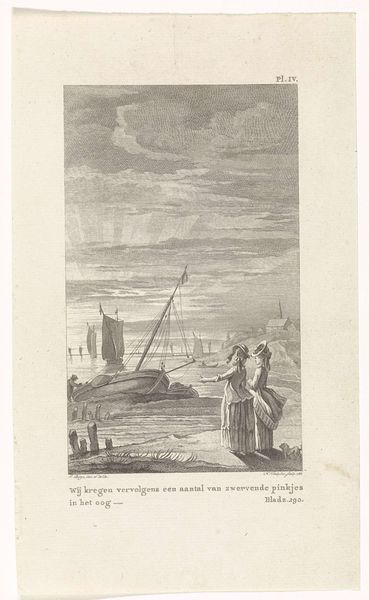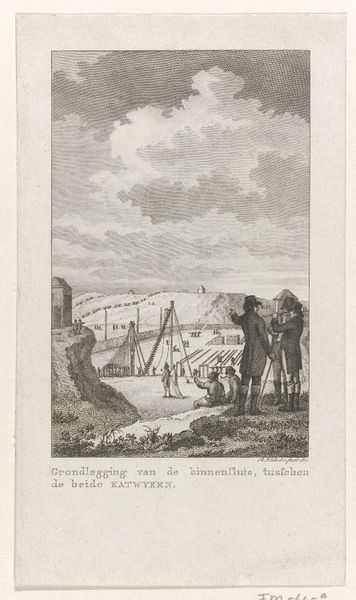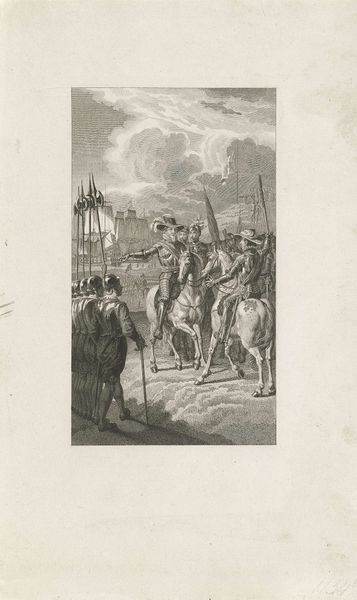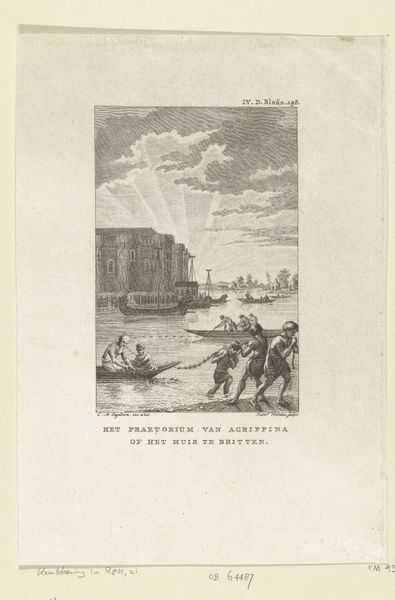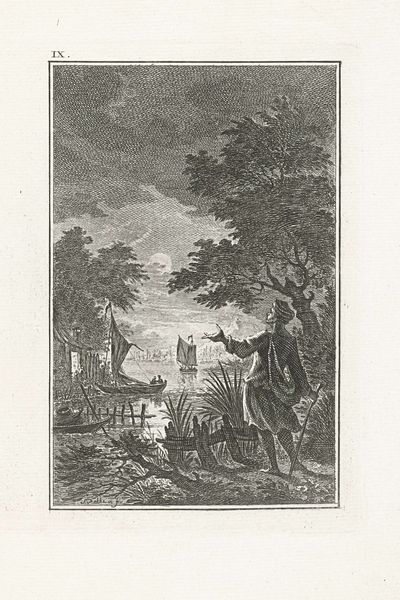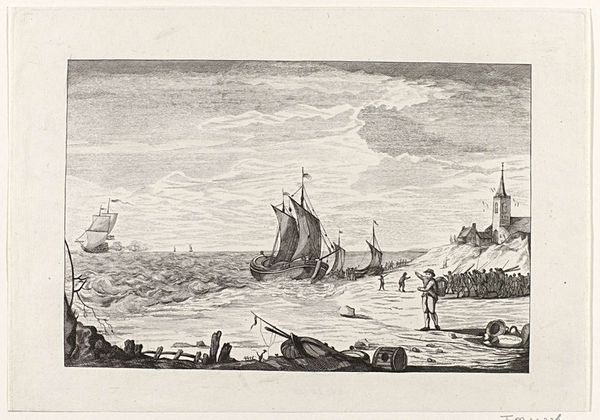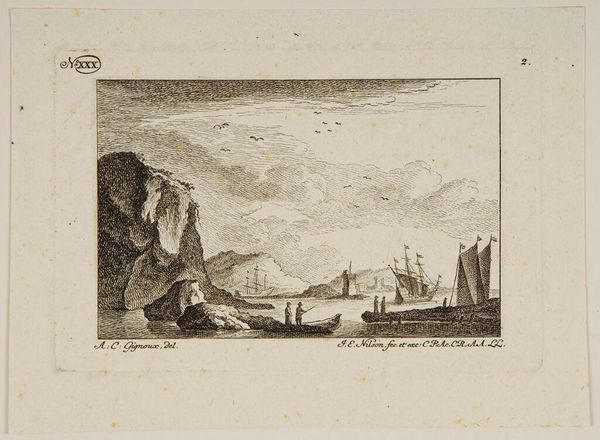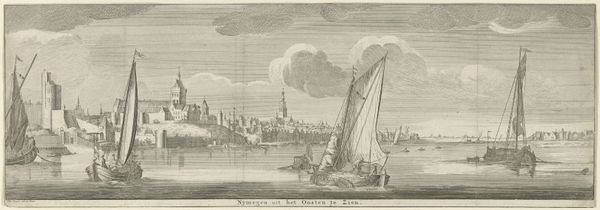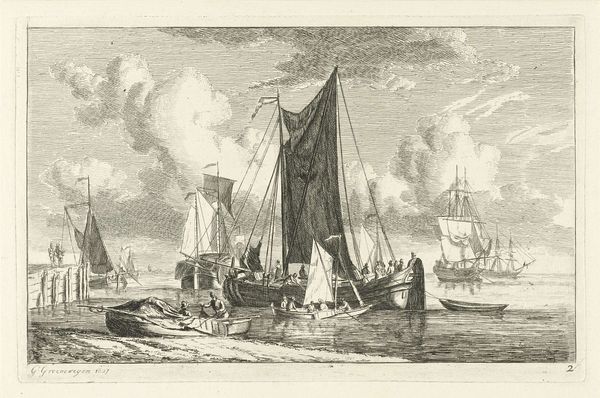
Dimensions: height 144 mm, width 87 mm
Copyright: Rijks Museum: Open Domain
Editor: We’re looking at “Strand met twee dames,” or "Beach with Two Ladies," a drawing by Jacobus Buys, created sometime between 1734 and 1801. It’s made with pencil, pen, and ink on paper and housed here at the Rijksmuseum. It strikes me as a scene capturing a fleeting, ordinary moment, but with incredible detail. What do you see in this piece? Curator: I'm immediately drawn to the material conditions that produced this image. The availability of paper and ink, the specific skill set required to manipulate those materials – these were not universally accessible. What kind of labor was involved in paper production at this time? The quality suggests a certain economic framework at play. Editor: So, you’re focusing on the physical making of the art? Curator: Precisely. Look at the composition. The labor that produced those ships. Buys shows these sailboats as objects created by collective effort – they required specific material resources such as lumber and labor power. How were these materials extracted and transformed into sailing vessels? Editor: That's a fascinating perspective! I was focusing on the women and the setting. I never really considered the means of how sailboats are manufactured in this time period. Curator: Consider how this image, made of humble materials, circulates and gains value. This is more than a "fleeting, ordinary moment;" it’s an insight into the networks of production, trade, and ultimately, consumption, both in the depicted scene and in the life of the drawing itself. What does this reveal about social stratification and access to resources? Editor: That makes me think about the ladies depicted in the image; they had to have the privilege of leisurely time on the beach while others had to work to produce those very ships they observe. It's a beautiful drawing but highlights disparities. Thanks for shifting my understanding. Curator: And thank you for being so receptive to these alternative ways of thinking about a work of art; by considering social class in art historical interpretation, we can develop our perception of a piece of work beyond the beautiful.
Comments
No comments
Be the first to comment and join the conversation on the ultimate creative platform.
